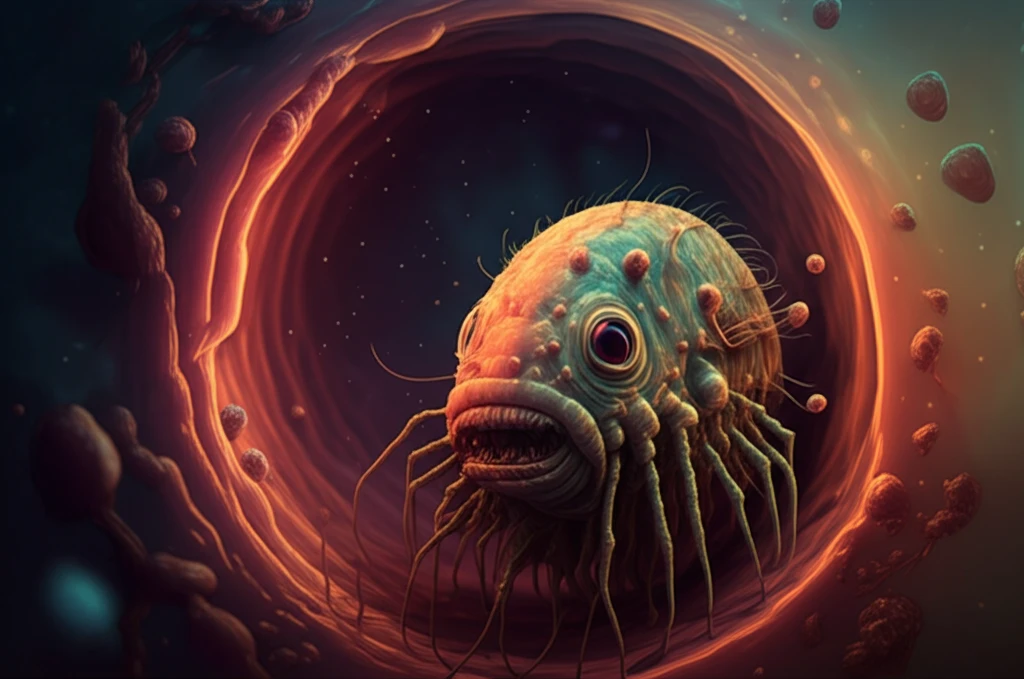
Silent Threat: Myxozoan Parasites Invading Fish Intestines
"Unveiling the Microscopic World of Fish Parasites and Their Impact on Aquatic Health"
Have you ever wondered about the hidden world inside a fish? It's not just scales and bones; it's an entire ecosystem, and sometimes, that ecosystem includes unwelcome guests. We're talking about Myxozoa, a group of microscopic parasites that can set up shop in various fish tissues, including the intestines.
These parasites, while tiny, can have significant effects on their hosts. While the scientific community knows they exist, their true impact and diversity are still being uncovered, especially in diverse environments like the Amazon River Basin. Understanding these parasites is crucial for maintaining the health of our aquatic ecosystems and the fish that call them home.
A recent study investigated the presence of Myxozoa in the intestines of silver catfish (Rhamdia quelen) from the Amazon River Basin in Brazil. This research sheds light on the morphology, pathology, and potential impact of these parasites, offering valuable insights into the intricate relationships within aquatic environments.
What are Myxozoa and Why Should We Care?

Myxozoa are a diverse group of parasites found in aquatic environments worldwide. They have a complex lifecycle and can infect various tissues and organs in fish, from gills and kidneys to gonads and intestines. While some infections are mild, others can be pathogenic, causing significant harm to their hosts.
- Widespread Presence: Found in diverse aquatic environments.
- Complex Lifecycle: Involves multiple hosts and stages.
- Tissue Specificity: Can infect various organs, impacting different bodily functions.
- Pathogenic Potential: Some species cause severe disease, affecting fish populations and aquaculture.
Protecting Fish Populations: A Call to Action
Understanding the presence and impact of parasites like Myxobolus is essential for maintaining healthy fish populations, both in the wild and in aquaculture. Further research is needed to fully understand the diversity, lifecycle, and pathogenic potential of these parasites. By investing in research and implementing effective management strategies, we can protect our aquatic ecosystems and ensure the sustainability of fish populations for future generations.
